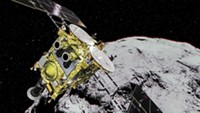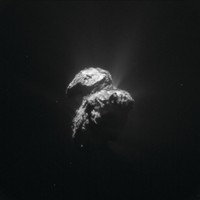Advertisement
Grab your lab coat. Let's get started
Welcome!
Welcome!
Create an account below to get 6 C&EN articles per month, receive newsletters and more - all free.
It seems this is your first time logging in online. Please enter the following information to continue.
As an ACS member you automatically get access to this site. All we need is few more details to create your reading experience.
Not you? Sign in with a different account.
Not you? Sign in with a different account.
ERROR 1
ERROR 1
ERROR 2
ERROR 2
ERROR 2
ERROR 2
ERROR 2
Password and Confirm password must match.
If you have an ACS member number, please enter it here so we can link this account to your membership. (optional)
ERROR 2
ACS values your privacy. By submitting your information, you are gaining access to C&EN and subscribing to our weekly newsletter. We use the information you provide to make your reading experience better, and we will never sell your data to third party members.
Physical Chemistry
Frosty Asteroid Leaks Water Into Space
An asteroid between Mars and Jupiter is unexpectedly covered in water ice and organic compounds
by Jyllian N. Kemsley
May 3, 2010
| A version of this story appeared in
Volume 88, Issue 18
At least one asteroid in the belt between Mars and Jupiter is unexpectedly covered in water ice and organic compounds, a pair of studies report (Nature 2010, 464, 1320 and 1322). Because the water on Earth was likely delivered by asteroids or comets, the finding raises the possibility of being able to study asteroid composition to pinpoint biogenic building blocks. In separate but complementary data collected at NASA’s Infrared Telescope Facility on Mauna Kea, Hawaii, two sets of researchers observing the asteroid 24 Themis found an absorption feature at 3.1 μm that is indicative of water ice, plus features at longer wavelengths that correlate with organic compounds. One team was led by Humberto Campins of the University of Central Florida and the other team consisted of Andrew S. Rivkin of Johns Hopkins University Applied Physics Laboratory and Joshua P. Emery of the University of Tennessee, Knoxville. Although researchers had previously observed hydrated minerals in asteroids, finding actual water on an asteroid surface was surprising—at temperatures of 150–200 K, surface ice should have sublimed away long ago. The researchers propose that there is a reservoir of ice inside the asteroid that is constantly sublimating. As the material diffuses up and out of the core, some of it recondenses as frost on the surface.





Join the conversation
Contact the reporter
Submit a Letter to the Editor for publication
Engage with us on Twitter